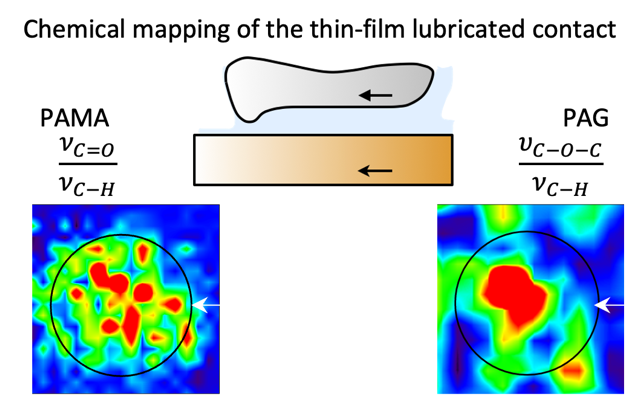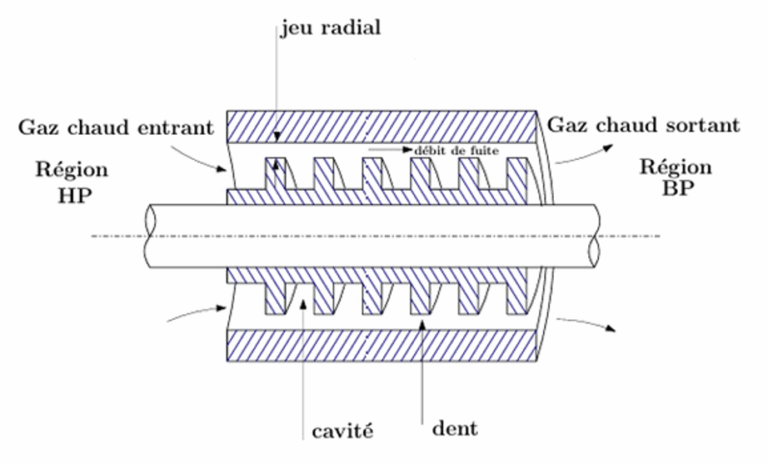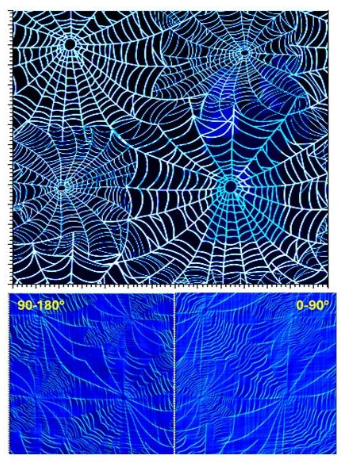In this article, we propose a direct measurement of the distribution of two different chemical species in a thin-film lubricated contact under pure rolling conditions.
The two chemical species were a carbonyl from an ester bond of a polyalphametacrylate (PAMA) polymer and an ether bond of a polyalphaglycol (PAG) molecule, formulated in low-viscosity fluids using mineral polyalphaolefin (PAO).
A full chemical mapping of the lubricated contact region was provided thanks to the Bastet tribometer consisting of a ball-on-disk tribometer placed under a microscope coupled with an infrared spectrometer.
By following the specific infrared stretching band of these two species in the inlet, contact and cavitation areas, we showed how these molecules penetrate the high-pressure contact zone and participate in the film-formation.











